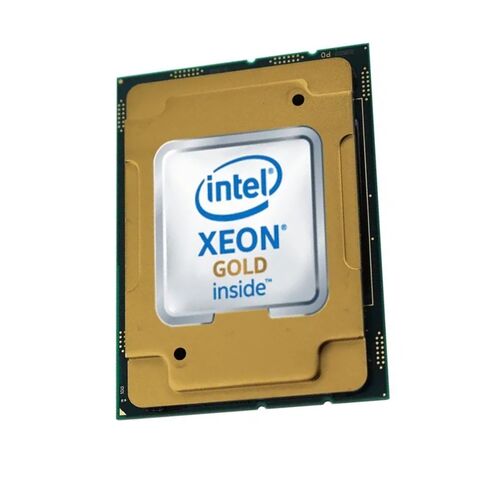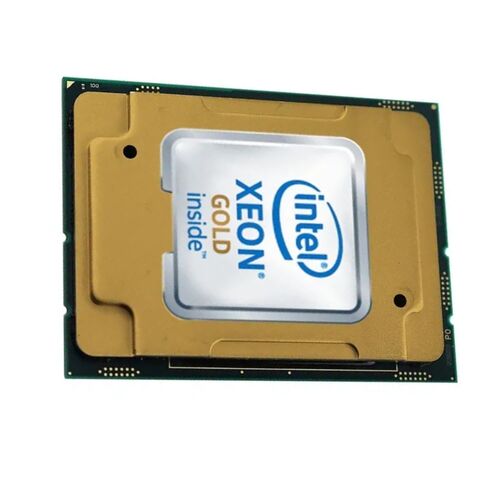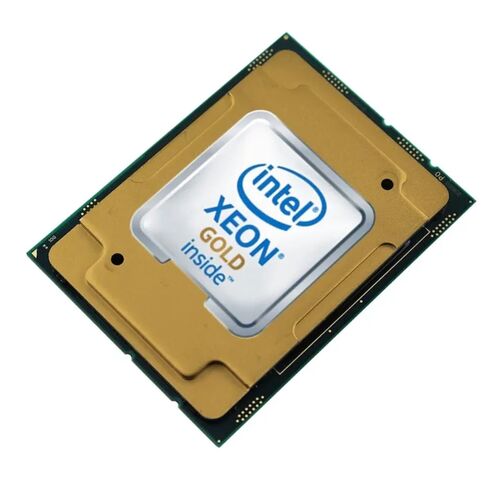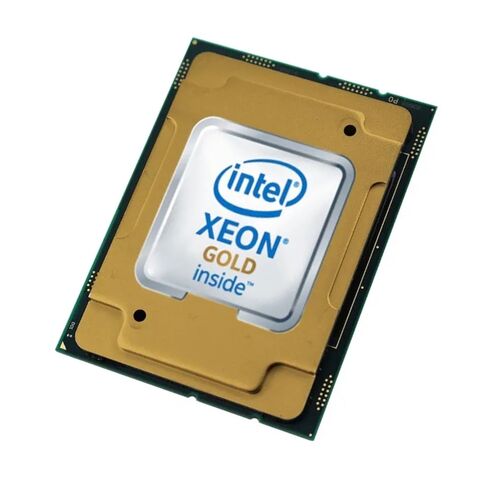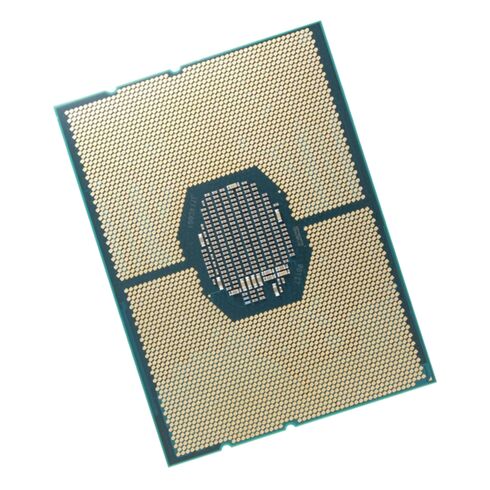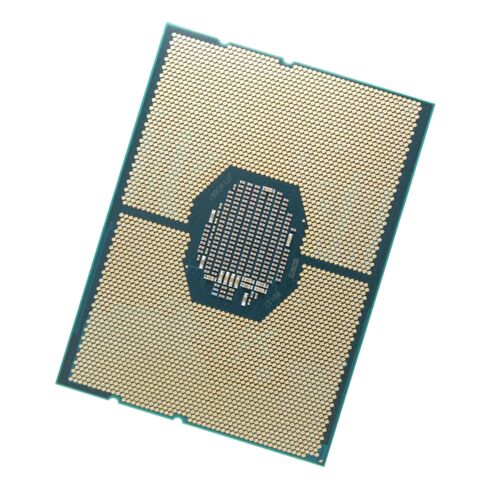XJ73T Dell Xeon Gold 6130 16-core Processor 2.1GHZ 22mb L3 Cache
- — Free Ground Shipping
- — Min. 6-month Replacement Warranty
- — Genuine/Authentic Products
- — Easy Return and Exchange
- — Different Payment Methods
- — Best Price
- — We Guarantee Price Matching
- — Tax-Exempt Facilities
- — 24/7 Live Chat, Phone Support
- — Visa, MasterCard, Discover, and Amex
- — JCB, Diners Club, UnionPay
- — PayPal, ACH/Bank Transfer (11% Off)
- — Apple Pay, Amazon Pay, Google Pay
- — Buy Now, Pay Later - Affirm, Afterpay
- — GOV/EDU/Institutions PO's Accepted
- — Invoices
- — Deliver Anywhere
- — Express Delivery in the USA and Worldwide
- — Ship to -APO -FPO
- — For USA - Free Ground Shipping
- — Worldwide - from $30
Product Overview
Dell XJ73T Xeon Processor
Key Features
- Manufacturer: Dell
- Type: CPU & Processor
- Part Number: XJ73T
- Model: Gold 6130
Technical Specifications
Core and Performance
- Core Count: 16-core
- Base Clock Speed: 2.10 GHz
- Turbo Boost Frequency: Up to 3.70 GHz
- Ultra Path Interconnect (UPI) Speed: 10.4 GT/s
- Number of UPI Links: 3
- Instruction Set: 64-bit
- Supported Extensions: Intel® SSE4.2, Intel® AVX, Intel® AVX2, Intel® AVX-512
Cache and Lithography
- L3 Cache Size: 22 MB
- Process Technology: 14nm
- Thermal Design Power (TDP): 125 W
- Socket Type: FCLGA3647
Memory Capabilities
Supported Memory Specifications
- Maximum Memory Capacity: 768 GB (depending on memory type)
- Memory Types: DDR4-2666
- Maximum Memory Speed: 2.67 GHz
- Memory Channels: 6
- ECC Memory Support: Yes
Additional Information
This high-performance processor is ideal for data-intensive applications and enterprise-level tasks. The Dell XJ73T Xeon Gold 6130 is designed for optimal efficiency and reliability, making it a valuable addition to any server setup.
Cores: 16
The Dell XJ73T Processor is equipped with an impressive 16 cores, making it a powerhouse for any user. The cores of a processor are responsible for executing tasks and running programs, so having a higher number of cores translates to better performance and multitasking capabilities.
Improved Performance
With 16 cores, the Dell XJ73T Processor can handle complex tasks and demanding applications with ease. Whether you're editing high-resolution videos, running resource-intensive software, or playing the latest games, this processor ensures smooth and lag-free performance. The additional cores allow for better parallel processing, enabling the CPU to tackle multiple tasks simultaneously.
Enhanced Multitasking
Multitasking is an essential aspect of modern computing, and the 16 cores of the Dell XJ73T Processor excel in this area. You can run multiple applications simultaneously without experiencing any slowdowns or performance bottlenecks. The processor's ability to distribute the workload efficiently among its cores ensures that each task receives adequate processing power, resulting in a seamless multitasking experience.
Optimized Workflows
For professionals who rely on their computers for intensive tasks such as video editing, 3D rendering, or data analysis, the 16 cores of the Dell XJ73T Processor significantly speed up their workflows. These professionals can complete their work faster and be more productive due to the increased processing power provided by the additional cores. Time-consuming tasks that used to take hours can now be completed in a fraction of the time.
Gaming Performance
Gamers can also benefit from the 16 cores of this processor. Many modern games are designed to take advantage of multiple cores, allowing for smoother gameplay and improved frame rates. With the Dell XJ73T Processor, you can run demanding games at higher settings without worrying about performance issues. The increased number of cores ensures that the processor can handle the game's computational requirements without breaking a sweat.
Base Clock Speed: 2.1GHz
The base clock speed of a processor refers to the frequency at which it operates when running at its default settings. In the case of the Dell XJ73T Processor, the base clock speed is 2.1GHz. While this may seem relatively low compared to some other processors on the market, there are several benefits and important considerations to keep in mind.
Power Efficiency
One of the advantages of a lower base clock speed is improved power efficiency. The Dell XJ73T Processor consumes less power when operating at a lower frequency, resulting in reduced power consumption and lower energy costs. This is particularly important for users who leave their computers running for extended periods or those concerned about their environmental impact.
Cooler Operation
A lower base clock speed also leads to cooler operation. The processor generates less heat when running at a lower frequency, reducing the need for extensive cooling solutions and maintaining a more comfortable operating temperature for your computer. Cooler operation not only prolongs the lifespan of your system but also ensures that it remains quiet, allowing you to work or play without distracting noise.
Boost Clock Performance
While the base clock speed may be lower, modern processors like the Dell XJ73T Processor feature dynamic frequency scaling technology that allows them to increase their performance when needed. This technology, known as Turbo Boost, enables the processor to temporarily increase its clock speed beyond the base frequency for demanding tasks or applications. This means that you still get excellent performance when required, while benefiting from improved power efficiency during less intensive tasks.
Better Overclocking Potential
For users who want to push their system's performance even further, a lower base clock speed can actually be an advantage. The Dell XJ73T Processor, with its 2.1GHz base clock speed, has more headroom for overclocking. Overclocking refers to increasing the clock speed of a processor beyond its default settings to achieve higher performance. With a lower base clock speed, users have more flexibility and potential for achieving stable and higher overclocks, resulting in even better overall performance.
L3 Cache: 22MB
The L3 cache, or Level 3 cache, is an important feature of the Dell XJ73T Processor that plays a significant role in improving system performance. The L3 cache acts as a high-speed buffer between the processor and main memory, storing frequently accessed data to reduce memory latency and improve overall system responsiveness.
Faster Data Access
With a generous 22MB of L3 cache, the Dell XJ73T Processor can store a substantial amount of data that the CPU frequently needs to access. This reduces the time it takes for the processor to retrieve data from the main memory, resulting in faster overall performance. The larger the L3 cache, the more data can be stored, reducing the need for frequent trips to slower main memory.
Improved Multitasking
The ample L3 cache size of the Dell XJ73T Processor boosts multitasking capabilities by allowing the processor to store more instructions and data from various applications simultaneously. This means that when switching between different tasks or running multiple applications simultaneously, there is less need to fetch data from main memory constantly. As a result, user experience is enhanced, and overall system responsiveness is improved.
Enhanced Gaming Experience
Gamers can also benefit from the 22MB L3 cache of this processor. Many games require quick access to large amounts of data during gameplay, such as textures, models, and sound files. With a larger L3 cache, the processor can store more game-related data, reducing loading times and improving in-game performance. This results in a smoother gaming experience with reduced stuttering and faster level loading.
Accelerated Content Creation
Content creators who work with resource-intensive software, such as video editing or 3D rendering applications, can take advantage of the 22MB L3 cache of the Dell XJ73T Processor. These applications often require frequent access to large datasets and assets. With a larger L3 cache, the processor can store more of these frequently accessed data, significantly reducing rendering times and improving overall productivity.
Bus Speed: 10.4GT/s
The bus speed is an important factor to consider when evaluating the performance of a processor. In the case of the Dell XJ73T Processor, it boasts a high bus speed of 10.4GT/s (gigatransfers per second). The bus speed represents the rate at which data is transferred between the processor and other components of the computer system.
Improved Data Transfer
With a high bus speed of 10.4GT/s, the Dell XJ73T Processor can transfer data quickly and efficiently between various system components, such as the memory, storage devices, and peripherals. This results in faster overall system performance, particularly when dealing with data-intensive tasks or large file transfers. The high bus speed ensures that data moves seamlessly between components without causing bottlenecks or delays.
Enhanced System Responsiveness
The high bus speed of the Dell XJ73T Processor contributes to improved system responsiveness. When launching applications or accessing files stored on storage devices, the processor can quickly retrieve the necessary data due to the fast bus speed. This leads to reduced load times, snappier system operations, and an overall smoother user experience. Whether you're browsing the web or working on complex projects, the high bus speed ensures that your computer responds promptly to your commands.
Optimized Gaming Performance
Gamers can benefit greatly from the high bus speed of the Dell XJ73T Processor. Games often require frequent data transfers between the processor, memory, and graphics card. With a high bus speed, the processor can quickly send and receive data to and from these components, ensuring smooth gameplay and reduced input lag. Gamers will experience faster loading times, quicker frame rendering, and greater overall performance.
Efficient Data Processing
The high bus speed of the Dell XJ73T Processor also contributes to efficient data processing. The processor can quickly access the necessary data from memory or storage devices, allowing for faster computations and data manipulation. This is particularly important for complex tasks such as video editing, 3D rendering, or scientific simulations that involve large datasets. The efficient data processing enabled by the high bus speed ensures that these tasks are completed in a shorter amount of time.
Manufacturing Technology: 14nm
The manufacturing technology refers to the size of the transistors used to build the processor. In the case of the Dell XJ73T Processor, it is manufactured using a 14nm process. The smaller the manufacturing technology, the more transistors can fit on a single chip, resulting in improved performance and efficiency.
Increased Performance
The 14nm manufacturing technology used in the Dell XJ73T Processor allows for a higher density of transistors on the chip. This means that more transistors are available to perform calculations and execute instructions simultaneously, resulting in increased processing power and improved overall performance. Users will experience faster application loading times, smoother multitasking, and improved responsiveness.
Improved Energy Efficiency
A smaller manufacturing technology also leads to improved energy efficiency. With a 14nm process, the Dell XJ73T Processor consumes less power compared to processors manufactured using larger technologies. This is because smaller transistors require less power to switch on or off, resulting in reduced energy consumption and lower heat generation. Improved energy efficiency not only translates to lower electricity bills but also contributes to a greener computing environment.
Lower Heat Generation
The use of a 14nm manufacturing technology in the Dell XJ73T Processor also leads to lower heat generation. Smaller transistors dissipate less heat during operation, resulting in cooler and more stable system temperatures. This is particularly important for users who engage in resource-intensive tasks or gaming sessions, as it ensures that the processor remains within safe temperature limits, reducing the risk of thermal throttling or system instability.
Optimized Overclocking Potential
For users who want to push their system's performance beyond the default settings, a smaller manufacturing technology can offer advantages in terms of overclocking potential. The Dell XJ73T Processor, manufactured using a 14nm process, has more headroom for stable overclocking. The smaller transistors allow for higher clock speeds without sacrificing stability or increasing power consumption excessively. This means that users can achieve higher performance levels with proper cooling and overclocking techniques.
Power Consumption: 125W
The power consumption of a processor is an important consideration, especially for users concerned about energy efficiency or using their computers for extended periods. The Dell XJ73T Processor has a power consumption rating of 125W, which influences factors such as energy usage, heat generation, and system stability.
Energy Efficiency
The 125W power consumption rating of the Dell XJ73T Processor ensures that it strikes a balance between performance and energy efficiency. While it may consume more power compared to processors with lower ratings, it still delivers excellent performance for a wide range of tasks while keeping energy consumption within reasonable limits. This is particularly important for users who leave their computers running for extended periods or those who are conscious of their environmental impact.
Heat Generation
The power consumption of a processor directly affects the amount of heat it generates during operation. The Dell XJ73T Processor's 125W power consumption rating means that it emits a moderate amount of heat when under full load. This is important for maintaining optimal system temperatures and preventing overheating. As long as the system is adequately cooled, the processor will operate within safe temperature limits, ensuring stability and longevity.
System Stability
Power consumption plays a crucial role in system stability, particularly during resource-intensive tasks or when overclocking. The 125W power consumption rating of the Dell XJ73T Processor ensures that it receives enough power to operate reliably under demanding conditions. This means that users can engage in tasks such as video editing, gaming, or 3D rendering without experiencing performance issues or system crashes often associated with insufficient power supply.
Compatibility and Cooling
When considering a processor with a power consumption rating of 125W, it's essential to ensure compatibility with your motherboard and cooling solution. Some motherboards may not support processors with higher power requirements, so it's crucial to verify compatibility before making a purchase. Additionally, efficient cooling is necessary to dissipate the heat generated by the processor effectively. Investing in a high-quality cooling solution will help maintain optimal temperature levels and ensure long-term stability.
In conclusion, the Dell XJ73T Processor offers impressive features and capabilities that cater to a wide range of users. With its 16 cores, users can expect improved performance, enhanced multitasking, and optimized workflows. The base clock speed of 2.1GHz provides power efficiency, cooler operation, and ample overclocking potential. The 22MB L3 cache improves data access, multitasking, and gaming experiences. The high bus speed of 10.4GT/s ensures improved data transfer, system responsiveness, and gaming performance. The 14nm manufacturing technology offers increased performance, energy efficiency, lower heat generation, and optimized overclocking potential. Finally, the 125W power consumption rating strikes a balance between performance and energy efficiency while ensuring system stability when properly cooled. Overall, the Dell XJ73T Processor is a reliable and powerful choice for users seeking exceptional performance in their computing endeavors.

